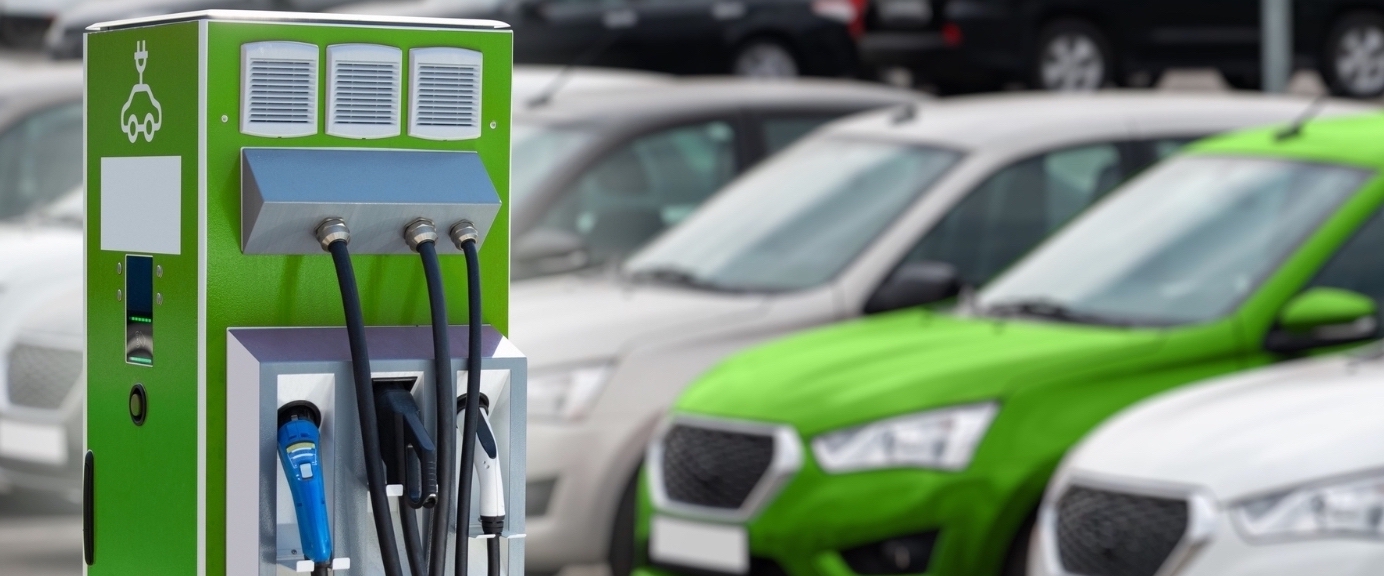Loading component...
EV Charging Infrastructure: The Real Benefits of Real Estate Development

Have the transport and traffic industries given much thought to how the widespread adoption of electric vehicles will play out in the retail sector? Property expert Tomas Jansons has and gives us the benefit of his wisdom
The Covid-19 pandemic fuelled huge growth in e-commerce as lockdowns restricted access to brick and mortar shops, and drove digitisation across the industry. With governments’ climate targets in mind retail fleets are increasingly adopting electric vehicles (EVs), but although it is encouraging to see the retail industry moving towards more environmentally conscious logistics, research conducted by ChargedEV found that 33% of companies using or considering using EVs have no charging points at their company premises.
An ever bigger problem is the lack of stop-gap charging provisions that have been installed. As both EV ownership and charging are still in their infancy, there is a severe lack of charging infrastructure.
As quoted in The Economist: “Forget Tesla’s production hell. The hardest bit of EVs is the powering up.”
With the undoubted upward trajectory of e-commerce, this teething problem for commercial EV adoption only seems to be growing. Internet shopping is now more popular in the UK than any other country, according to the International Trade Administrator 2022 UK Commercial Report. Consumer e-commerce now accounts for 30% of the total retail market in the UK (up from 20% in 2020), with e-commerce annual revenue totalling over US$120 billion. From such growth and in this market demand and workload for retail fleets have unsurprisingly followed suit.
With the undoubted upward trajectory of e-commerce, the teething problem of powering up for commercial EV adoption only seems to be growing
BARRIERS TO IMPLEMENTATION
Simultaneously, however, the UK Government’s Net Zero targets still stand and fully transitioning to complete adoption of electric vehicles across personal, public and commercial transport is pivotal to reaching them. The Climate Change Committee (CCC) has stated that all vehicles – including heavy-goods vehicles (HGVs) – must be fossil fuel-free by 2050 if we are to achieve Net Zero goals. However, while drivers are enthusiastic about the glamorous and high-tech EV revolution, a merciless bottleneck created by a lack of charging infrastructure has presented itself, halting widespread adoption.
According to an estimate by the International Energy Agency (IEA), by the end of this decade 40m public charging points will be needed, requiring an annual investment of US$90bn a year as 2030 approaches. If Net Zero goals are to be met, by 2050 the world will need five times as many EV charging points as it has today. Using the UK as another example, its 2030 ICE ban will see the end of sales of new petrol or diesel cars and while there are no plans in place to completely ban petrol or diesel cars, they will only be available to buy in the second-hand market to take the first step towards full transition.
If Net Zero goals are to be met, by 2050 the world will need five times as many EV charging points as it has today
Despite more than 35,000 public charging points across the UK, Arval Mobility Observatory Barometer research found that charging infrastructure was cited as the biggest barrier to EV adoption for 59% of fleets. The availability of the necessary infrastructure will entirely depend on grid capacity and land availability in prime locations for fleet charging and parking. This means a swift transition may not be feasible across the board and some countries will be slower to adopt EV fleets than others. While up to a third of the power required for EV fleet charging can be produced on site, the power sourced must be renewable to meet climate targets.
INVESTMENT OPPORTUNITIES
The real estate industry clearly has a role to play in resolving this but adding EV charging facilities is relatively new to most real estate owners. Investment into this area must be well-informed, as failure to evaluate and strategically plan for EV charging brings the risk of stressed power grids, low quality implementation and therefore missed revenue.
However, it does have the potential to present a win/win bonus of differentiating portfolios and securing a competitive advantage when full EV adoption becomes the norm. Big players in e-commerce such as Amazon have already started building multi-storey parking facilities with hundreds of charging points for vans, but other smaller depots can fit very few charging points; despite the clear benefits of a £15 (€17) per day cost to charge and park versus £5-10 (€6-12) per day for parking and around £60-70 (€70-80) per day on diesel, as well as taking steps towards Net Zero.
Failure to evaluate and strategically plan for EV charging brings the risk of stressed power grids, low quality implementation and therefore missed revenue
So, although the incentive and willingness for transition to EVs is there, the current availability of charging points is an operationally useless number.
However, as fleets make up 6 million out of the 30 million vehicles on the road in the UK, EV infrastructure has until now been focused on personal drivers. Unsurprisingly, it is not appropriate for fleet drivers to use these, presenting an almost untapped market for real estate investors and landowners, particularly in prime locations lining major motorways.

THE TIME IS RIGHT
Now is an opportune time to utilise such spaces as EV adoption is still relatively new – and we will likely see a land grab in the near future similar to that of the fibre space to develop competitive and comprehensive networks. This competition will further accelerate the formation of charging networks and reduce range anxiety to support further EV penetration across the country (and in Europe as a whole) and the sooner this happens, the more viable the widespread adoption of EV fleets.
As a result of this, property developers’ strategies going forward will focus on acquiring sites suitable for EV infrastructure. This process starts with developing relationships with distribution and fleet companies as well as landowners to provide this much-needed infrastructure.



.png?h=400&iar=0&w=1400)
